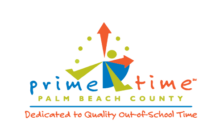9:00 am - 11:00 am
It was a great experience, I learned a lot. It gave me the opportunity to see some areas where I need to work to better my leadership and my program!
Lorena DAfterschool Professional
Part II – Building a Positive Community with Teens: VIRTUAL
Participants are REQUIRED TO ATTEND ALL TRAININGS in the series and create and try out tailored activities in between trainings.
Part 1 – Building Positive Community with Teens – Laying the Foundation
Part 2 (2/21/24) – Building Positive Community with Teens – Meaningful Relationships
To learn, stay engaged, and develop as individuals, teens need a safe, predictable, joyful, and inclusive space where they can experience belonging, significance and emotional safety. They also need to feel comfortable taking risks and working with their peers. How can you create such a space for the teens you work with? This lively training series explores the environment in which you work with youth and provides strategies, fun group activities, and relationship-building meeting structures that will help you establish a community that promotes positive experiences for teens.
Please note: Only afterschool practitioners working with middle school, high school, or fifth grade elementary youth should register for this training.
Upon successful completion of this training series and follow-up assignment(s), the participant will earn 6 clock hours (.6 CEUs) of training.
Building Positive Community with Teens – Laying the Foundation
Training Objectives
Participants will:
- Discuss the importance of belonging, significance and emotional safety for youth
- Outline the methods involved in establishing a positive community
- Utilize interactive learning structures and brain breaks that provide opportunities for youth to feel a sense of belonging and significance
Building Positive Community with Teens – Meaningful Relationships
Training Objectives
Participants will:
- Explain the Responsive Advisory Meeting structure.
- Practice developing Responsive Advisory Meetings as a way to help youth build positive relationships.
Core Knowledge, Skills and Competencies Addressed (CKSCs)
Learning Environments and Curriculum
Physical Environment and Activities
Identify – A. Recognizes the importance of creating a developmentally and culturally responsive learning environment and following a curriculum.
Identify – C. Identifies aspects of a developmentally and culturally responsive environment and learning plan.
Apply – B. Shows warmth, caring, and respect for children, youth, and others as individuals.
Apply – C. Employs schedules, routines, and structured transitions.
Physical, Social/Emotional, and Cognitive Development
Apply – B. Implements strategies to develop young people’s self-awareness, social awareness, self-management, relationship building, and responsible decision making.
Apply – C. Models healthy interactions and guides children and youth in self-awareness, social awareness, relationships, and responsible decision making.
Language and Communication Development
Apply – C. Encourages children and youth to communicate in a variety of ways
Creative Expression
Apply – B. Supports individual expression, including cultural influences.
Relationships and Interactions with Children and Youth
Individual Child/Youth Guidance
Apply – A. Provides a supportive environment in which children and youth can learn and practice pro-social behaviors.
Apply – D. Practices positive, health interactions and guides children and youth in self-awareness, social awareness, relationship building, and responsible decision making.
Youth Engagement, Voice, and Choice
Apply – A. Encourages youth to express their ideas and feelings to support healthy development, meaningful relationships, and program quality.
Equity and Inclusion
Inclusive and Accessible Physical and Social Spaces
Apply – A. Creates an inclusive, welcoming, and respectful environment for all.
Primary QIS Scales Addressed:
I. Safe Environment
I-E. Creating Safe Spaces
II. Supportive Environment
II-J: Active Learning
III. Interactive Environment
III-K. Sense of Belonging
III-N: Cultivating Empathy

